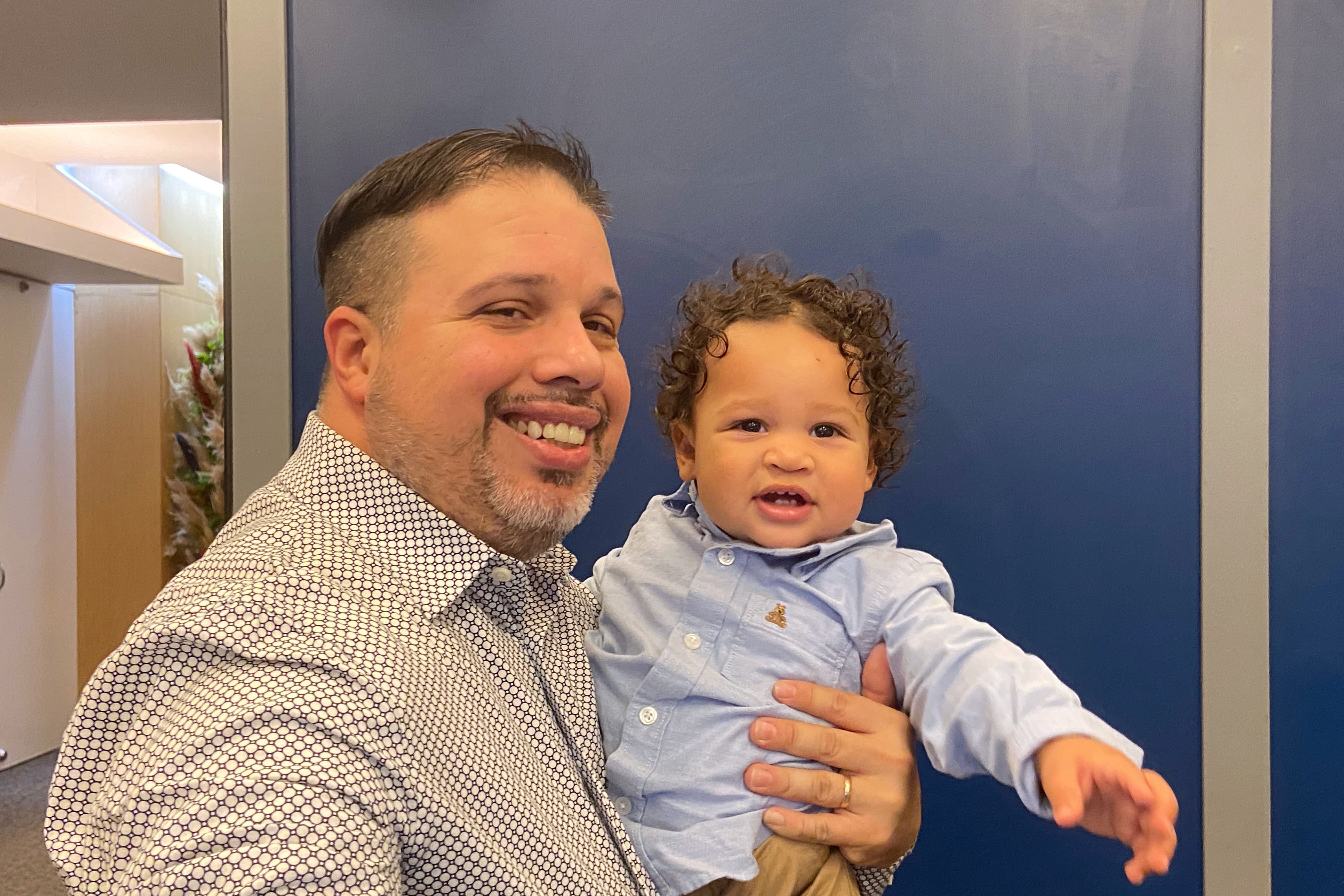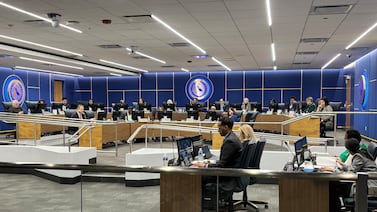Sign up for Chalkbeat New York’s free daily newsletter to get essential news about NYC’s public schools delivered to your inbox.
Bronx dad and paraprofessional Earnest Suarez felt like he was in a tug-of-war.
His 1-year-old son needed day care and his 18-year-old son needed to go to college but he couldn’t afford both.
“Am I paying for his college or paying for child care?” Suarez said, his arms swing back and forth as if he’s holding two weights.
He landed on saving for college. Suarez’s high school son and elderly mom began taking care of baby Jackson, but when schedules didn’t line up, Suarez was forced to take off work at Ella Baker Elementary School on the Upper East Side.
Then, his colleague introduced him to the NYC Childcare Navigator, a platform the United Federation of Teachers created about a year ago to help their members find affordable, nearby child care centers. Of the 1,600 union members participating, half of them reported that a parent could go back to work full time, and 42% reported increased household income after access to child care.
The platform — which has about 12,000 child care listings —is now open to residents across New York City, union officials announced Wednesday.
“We couldn’t gatekeep something that we knew so many New York City families needed,” said Michael Mulgrew, president of the union.
The lack of affordable child care reached dire levels since the pandemic, increasing by a total of $4,000, at least, over five years since 2019, according to New York City Comptroller Brad Lander’s report from January. The cost of private child care ranged from $16,900 to $26,000 annually in 2024, depending on the type of care and population it served, the report found. Making matters worse, the city stopped enrolling low-income families in the Child Care Assistance Program after a funding shortfall in the state budget in May.
The union partnered with two software firms, Mirza and Upfront, to build the navigator tool.
The navigator works in 10 languages and uses an AI chatbox to answer questions for users, said Doug Friedlander, project director for the tool. Families can input their income, residence, and background information to see if they are eligible for child care benefits. From there, families can see which centers are available and connect with a provider.
Child care data in the city is spread across multiple agencies, like the Department of Education, Department of Health, and Office of Children and Family Services. But agencies weren’t collecting information about the opening hours of centers, or if they have available seats, said Dana Levin-Robinsion, the chief executive officer of Upfront.
The tool “finally brings all that information together in one place,” Robinson said.
Child care providers can add this information live so users have the latest updates.
“I’m definitely less stressed,” Suarez said. After using the tool, his youngest goes to a child care center in the Bronx, and his older son, who was eager to continue his education after high school, is now at college.
Ananya Chetia is a reporting intern for Chalkbeat New York, covering NYC public schools. Contact Ananya at achetia@chalkbeat.org.






